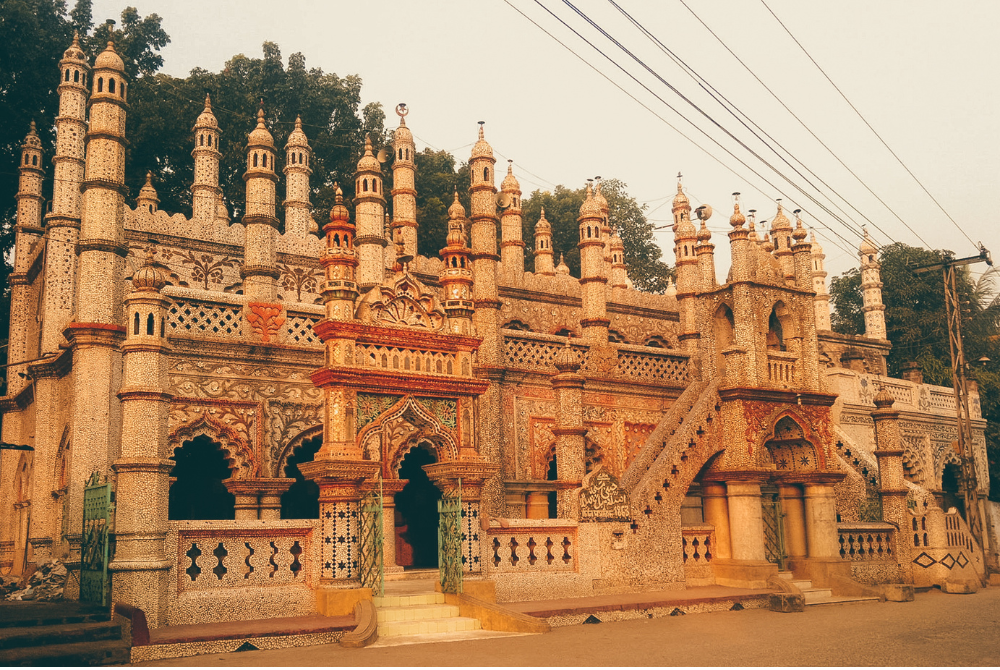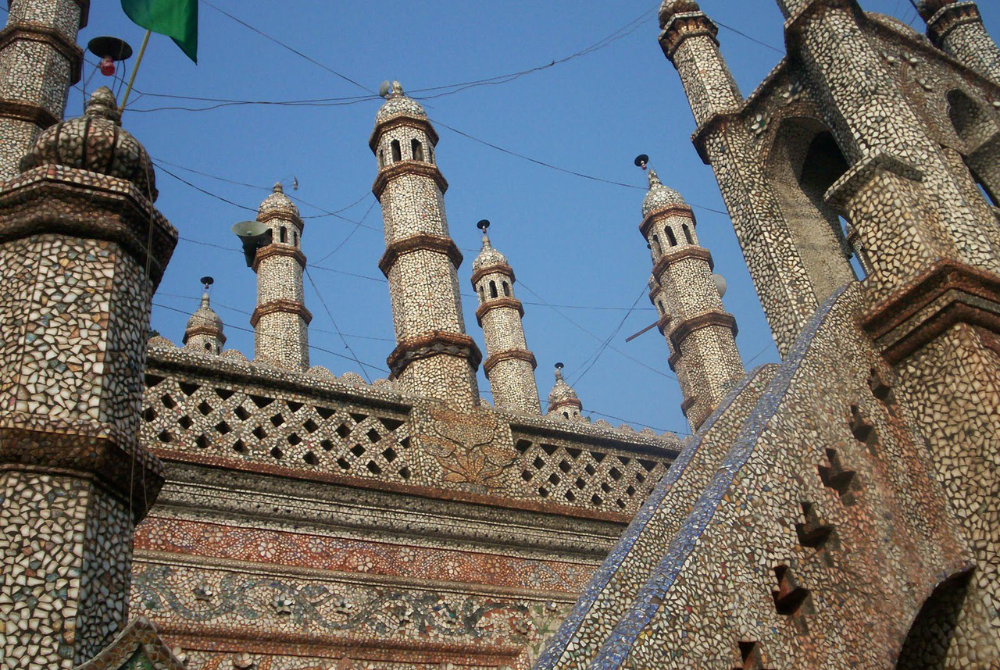The Chini Mosque – A Marvel of Aesthetic Architecture
In the quaint town of Syedpur, situated approximately 20 kilometers away from Nilphamari, stands the enchanting “Chini” mosque, celebrated for its captivating architecture.
The Origin of the Name: Sugar Grains or Porcelain?
While many mistakenly attribute its name to Chinese origins, it actually derives from the Bengali term “Chini,” meaning sugar, reflecting its meticulous construction akin to sugar grains. Yet, local lore suggests another intriguing origin story, claiming the mosque’s name stems from its unique composition entirely crafted from porcelain.
Pioneers of Construction: Haji Hafiz Abdul Karim and More
In 1920, the inaugural phase of this historic mosque took shape through the visionary efforts of entrepreneur Haji Hafiz Abdul Karim. Later, the mosque’s grandeur was designed by Md Mokhtul and Nabi Baksha, bringing together hundreds of skilled artisans and craftsmen.
Historical Roots: Mughal Period and Early Development
Later, Wazir Ali Ahmed, a member of the founding family, spearheaded its expansion and modification efforts. With a total of 27 minarets, though five remain incomplete, the mosque is famed for its mosaic work, known as “Chini Tikri” art of decoration. This intricate technique involves the use of small chips of chinaware plates, colored and non-colored glass pieces, porcelain, and jewels as decorative elements. At the time of construction, these ceramic pieces were procured from Kolkata, as no ceramic factories existed in West Pakistan/Bengal (present-day Bangladesh).
Continuation of Beauty: Efforts by Mofizuddin and Shafiuddin Ahmed
In the mid-20th century, Mofizuddin Ahmed and Shafiuddin Ahmed, renowned cloth merchants and sons of the late Wazir Ali Ahmed, continued to enhance the mosque’s beauty.
Intricate Wall Decorations: Vases, Roses, and Celestial Motifs
The walls of this magnificent structure are adorned with an array of intricate details, featuring vases, flowering shrubs, roses, crescent moons, and stars, all contributing to its popularity.
Materials of Grandeur: Marble Stones and Porcelain Donations
Within the mosque, you’ll discover 243 marble stones sourced from Kolkata’s Shankar quarries. Additionally, approximately 25 tons of porcelain pieces were meticulously placed on the mosque’s exterior, courtesy of a generous donation from a gas factory located in Bogura. These porcelain embellishments grace the mosque’s three imposing domes and 32 minarets.
The Chini Mosque’s Appeal to Tourists
Beyond serving as a place of worship, the Chini Mosque’s alluring architecture beckons tourists from both near and far. Special accommodations on the mosque’s second floor cater to visitors. Every day, countless individuals, domestic and international, embark on a journey to witness the historical marvel that is the Chini Mosque.
The Glass Mosque: A Distinctive Architectural Gem
Referred to also as the “Glass Mosque,” the Chini Mosque stands as one of the most captivating and distinctive architectural gems in the region. Its rich history dates back to the Mughal era in Bengal, with construction commencing in 1863 under the guidance of Haji Bakir Ali Ahmed, initially as a humble prayer house.
The Chini Mosque is not merely a place of worship; it is a testament to artistic brilliance and historical significance. Its architectural allure and fascinating backstory make it a must-visit destination for travelers seeking to immerse themselves in the rich heritage of Bangladesh.


